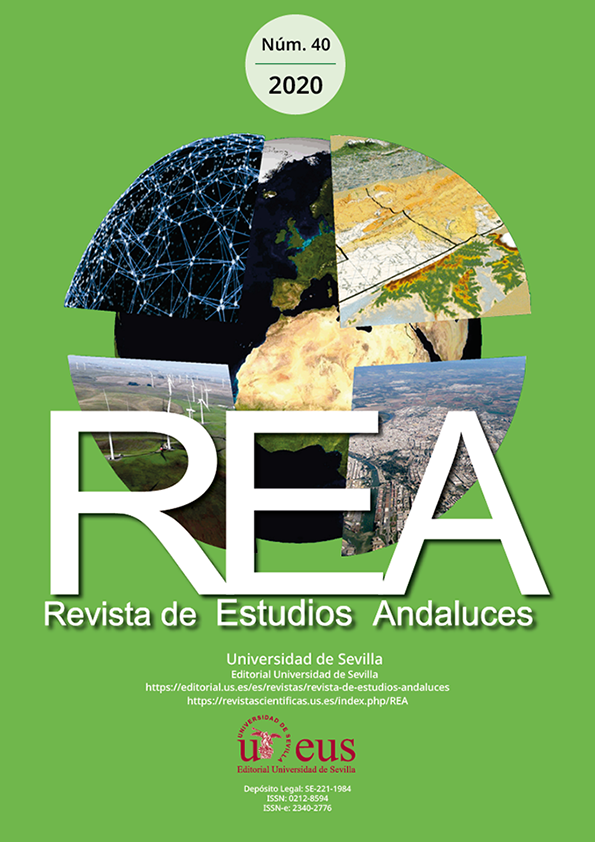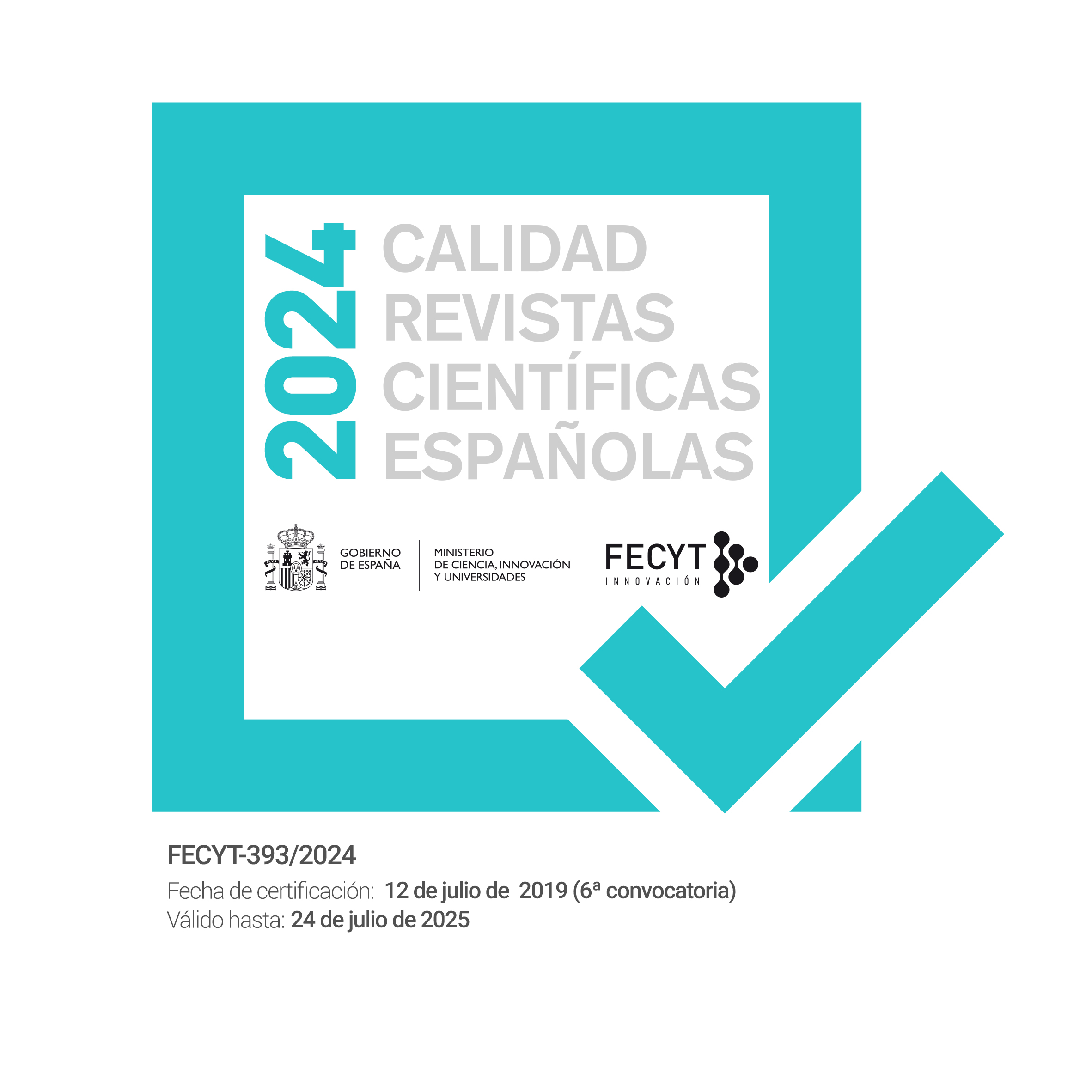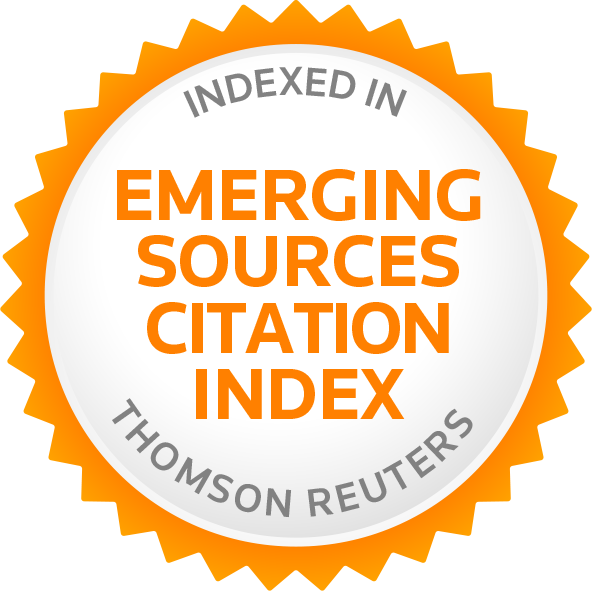Measuring the Existence of a Link between Crime and Social Deprivation within a Metropolitan Area
DOI:
https://doi.org/10.12795/rea.2020.i40.04Palabras clave:
Delincuencia, Privación social, Índice agregado, GénovaResumen
El propósito de la investigación, realizada en el municipio de Génova (Italia), es verificar la existencia de una relación entre delito, observado en el lugar donde se comete el acto delictivo, y privación social. En otras palabras, se pretende investigar la relación existente entre delito y privación social desde una perspectiva espacial. El delito, que se manifiesta en varias formas, se identifica en la literatura científica a partir del concepto de un “acto desviado” que puede analizarse con enfoques de base espacial, temporal y psicológica. Por su parte, la privación social es un fenómeno complejo, definido por Townsend, cuyo análisis se basa fundamentalmente en el aspecto relacional de grupos marginados y vulnerables. La principal aportación de este trabajo estriba en la alta consistencia territorial de los datos, referidos a distrito local de Génova. La metodología consiste en la realización de dos análisis cuantitativos agregados para la construcción de los índices. Por un lado, el delito se mide con la aplicación de un método de suma de variables estandarizadas, mientras que la privación social se estudia a través del método DP2. Los análisis muestran una tendencia de altos niveles de delincuencia en los distritos más cercanos al centro de la ciudad de Génova, tendencia que disminuye al desplazarse hacia la periferia. Las zonas del centro de la ciudad son las más concurridas y las más difíciles de controlar continuamente debido al intenso tránsito de personas, especialmente en las horas punta. Un resultado similar se observa en lo que respecta a la privación social: los distritos más cercanos al centro tienden a ser más críticos desde el punto de vista social, mientras que los distritos más alejados tienen un tejido social más sólido, debido también a una menor tránsito de los residentes. El trabajo puede ser un instrumento útil para ayudar a los responsables de la formulación de políticas a definir medidas oportunas y localizadas para luchar contra la delincuencia.
Descargas
Citas
Alston, J.D. (1994). The Serial Rapist’s Spatial Pattern of Target Selection. Burnaby (BC), Simon Fraser University, School of Criminology.
Bagnasco H., Barbagli A. & Cavalli, A. (2012). Corso di sociologia. Il Mulino, Bologna.
Bartley, M. & Blane, D. (1994). Commentary: Appropriateness of deprivation indices must be ensured. British Medical Journal, 309, 1479. https://doi.org/10.1136/bmj.309.6967.1479
Bellani, L., & D’Ambrosio, C. (2011). Deprivation, social exclusion and subjective well-being. Social Indicators Research, 104(1), 67–86. https://doi.org/10.1007/s11205-010-9718-0.
Blalock, H. M. (1964). Causal inferences in nonexperimental research. Chapel Hill: University of North Carolina Press.
Braçe, O. (2016). Study of the Effects of Urban Morphology on Physical Activity. Revista de Estudios Andaluces, (33), 5-7.
Brantingham, P.L., Brantingham & P.J., Seagrave, J. (1995). Crime and Fear at a Canadian University. In B.S. Fisher, J.J. Sloan (eds.), Campus Crime: Legal, Social and Policy Perspectives. Springfield (III), Charles C. Thomas, pp. 123-155.
Brantingham, P.L. & Brantingham, P.J. (1993). Environment, routine and situation: toward a pattern theory of crime. Advances in Criminological Theory, 5: 259-294.
Brantingham, P.L. & Brantingham, P.J. (1991). Environmental Criminology. Prospect Heights (III). Waveland Press. https://doi.org/10.4324/9781315128788-12
Bruzzi C., Ivaldi E. & Landi S. (2020) Non-compensatory aggregation method to measure social and material deprivation in an urban area: Relationship with premature mortality. The European Journal of Health Economics, 21(3), 381-396 https://doi.org/10.1007/s10198-019-01139-x
Bruzzi, C., Soliani, R. & Ivaldi, E. (2017). Analisi multidimensionale della deprivazione nella città di Genova. Percorsi di Scienze Economiche e Sociali, Impressioni Grafiche, Acqui Terme.
Carr-Hill, R. A., Jamison, J. & O’Reilly, D. (2002). Risk adjustment for hospital use using social security data: cross sectional small area analysis. British Medical Journal, 324, 390. https://doi.org/10.1136/bmj.324.7334.390
Castairs, V. & Morris, R. (1991). Deprivation and Health in Scotland. Aberdeen: Aberdeen. University Press.
Carstairs, V. (2000). Socio-economic factors at areal level and their relationship with health. Spatial Epidemiology. Edited by Elliott, P., Wakefield, J., Best, N., Briggs, D. https://doi.org/10.1093/acprof:oso/9780198515326.003.0004
Costanzo, C.M., Halperin, W.C. & Gale, N., (1986). Criminal mobility and the directional component in journeys to crime. In R.M. Figlio, S. Hakim & G.F. Rengert (Ed.), Metropolitan Crime Patterns Monsey (NY). Criminal Justice Press, 73-95.
Crawford, A. & Traynor, P. (2012) La Prévention de la Délinquance chez les Anglais: From community-based strategies to early interventions with young people. In E. Baillergeau & P. Hebberecht (Ed), Social Crime Prevention in Late Modern Europe, 63-101. Brussels: VUB Press.
Cromwell, P.F., Olson, J.N. & Avary, D.W. (1991). Breaking and Entering: an Ethnographic Analysis of Burglary. Newbury Park (Sage).
de Courson, B. & Nettle, D. (2020). Why do inequality and deprivation produce high crime and low trust? https://doi.org/10.31234/osf.io/p2aed
Diamantopoulos, A. & Winklhofer, H. M. (2001). Index construction with formative indicators: An alternative to scale development. Journal of Marketing Research, 38(2), 269–277. https://doi.org/10.1509/jmkr.38.2.269.18845
Farrington, D.P. (2007) Childhood Risk Factors and Risk-Focused Prevention. In M. Maguire, R. Morgan & Reiner (Ed), The Oxford Handbook of Criminology, 602-640. Oxford: Oxford University Press (4th edition).
Farrington, D. (1992). Psychological contributions to the explanation, treatment and prevention of offending in Psychology and the Law: International Perspectives. Edited by Losel, F., Bender, D., Bliesner, F. Berlin: De Gruyter.
Felson, M. (1994). Crime and everyday life: Insight and Implications for Society. Thousand Oaks (Cal.). Pine Forge Press.
Ferenc, I. (2007). Globalised Criminality, Local Crime Control and Prevention. Sociologija. Mintis ir Veiksmas, 2(20), 11-31. https://doi.org/10.15388/SocMintVei.2007.2.6034
Gartner, R. (1990). The victims of homicide: a temporal and cross-national comparison. American Sociological Review, 55, 92-106. https://doi.org/10.2307/2095705
Garland, D. (1996). The Limits of the Sovereign State, British Journal of Criminology, 36(4), 445-71. https://doi.org/10.1093/oxfordjournals.bjc.a014105
Garland, D. (2001). The Culture of Control, Oxford: Oxford University Press.
Hannon L. (2002). Criminal opportunity theory and the relationship between poverty and property crime. Sociological Spectrum, 22, 363-381. https://doi.org/10.1080/02732170290062676
Harcourt, B.E. (2015) Exposed: Desire and Disobedience in the Digital Age, Cambridge MA: Harvard University Press. https://doi.org/10.4159/9780674915077
Hetzer, W. (2006). Internationaler Terrorismus: Krieg oder Kriminalitat? Kriminalistik, 7, 428-437.
Hope, T. (2009). The political evolution of situational crime prevention in England and Wales. In A. Crawford (Ed) Crime Prevention Policies in Comparative Perspective, 86-109. Cullompton: Willan.
Hsieh, C. C. & Pugh, M. D. (1993). Poverty, income inequality, and violent crime: A meta-analysis of recent aggregate data studies. Criminal Justice Review, 18(2), 182–202. https://doi.org/10.1177/073401689301800203
Kolvin, I., Miller, F., Fleeting, M. & Kolvin, P. (1988). Social and Parenting Factors Affecting Criminal Offence Rates. British Journal of Psychiatry, 152, 80-90. https://doi.org/10.1192/bjp.152.1.80
Ivaldi, E. (2006). Indicators of deprivation as a measure of social disadvantage: the case of the Metropolitan Area of Genoa. Percorsi di Scienze Economiche e Sociali. Impressioni Grafiche. Acqui Terme.
Jarman, B. (1983). Identification of underprivileged areas. British Medical Journal, 286, 1705-1709. https://doi.org/10.1136/bmj.286.6379.1705
Lafree, G. (1998). Social Institutions and the Crime Bust of the 1990s. Journal of Criminal Law and Criminology, 88(4), 1325-1368. https://doi.org/10.2307/1144258
Mabughi, N. & Selim, T. (2006). Poverty as social deprivation: A survey. Review of Social Economy, 64(2), 181–204. https://doi.org/10.1080/00346760600721122.
Landi, S., Ivaldi, E. & Testi, A. (2017). Measuring Change Over Time in Socio-economic Deprivation and Health in an Urban Context: The Case Study of Genoa. Social Indicators Reasearch, 139, 745–785. https://doi.org/10.1007/s11205-017-1720-3
Macintyre, S., Ellaway, A. & Cummins, S. (2002). Place effects on health: how we can conceptualise, operationalise and measure them? Social Science and Medicine, 55, 125-139. https://doi.org/10.1016/S0277-9536(01)00214-3
Maggino, F. (2017a). Developing Indicators and Managing the Complexity. In F. Maggino (Ed.), Complexity in Society: From Indicators Construction to their Synthesis. Social Indicators Research Series, 70, 87-114. https://doi.org/10.1007/978-3-319-60595-1_4
Maggino, F., (2017b). Dealing with Syntheses in a System of Indicators. In F. Maggino (Ed.), Complexity in Society: From Indicators Construction to their Synthesis, Social Indicators Research Series, 70, 115-138. https://doi.org/10.1007/978-3-319-60595-1_5
Mayer-Schönberger, V. & Cukier, K. (2013). Big Data: A Revolution that will Transform How We Live, Work and Think. London: John Murray.
Mazziotta, M. & Pareto, A. (2016). On a Generalized Non-compensatory Composite Index for Measuring Socio-economic Phenomena. Social Indicators Research, 127, 983–1003. https://doi.org/10.1007/s11205-015-0998-2.
McAra, L. & McVie, S. (2012a). Critical Debates in Developmental and Life Course Criminology, Maguire, M., Morgan, R. & Reiner, R. (Ed.) The Oxford Handbook of Criminology, 531-60. Oxford: Oxford University Press. 5th edition. https://doi.org/10.1093/he/9780199590278.003.0018
McAra, L. & McVie, S. (2012b). Negotiated Order: The Groundwork for a Theory of Offending Pathways. Criminology and Criminal Justice, 12, 347–75. https://doi.org/10.1177/1748895812455810
Moffitt, A., Miech, T. & Silva, P. (1999). Reconsidering the relationship between SES (socio-economic) and delinquency: causation but no correlation. Criminology 37(1), 175-194. https://doi.org/10.1111/j.1745-9125.1999.tb00483.x
McCullagh, C. (1996). Crime in Ireland. Cork. Cork University Press.
Montero, J. M., Chasco, C. & Larraz, B. (2010). Building an environmental quality index for a big city: a spatial interpolation approach combined with a distance indicator. Journal of Geographical Systems, 12, 435-459. https://doi.org/10.1007/s10109-010-0108-6
Muratore, M.G. (2015). La misurazione del fenomeno della criminalità attraverso le indagini di vittimizzazione. Istituto nazionale di statistica.
O’Mahony, P. (1997). Mountjoy Prisoners. A Sociological and Criminological Profile. Dublin: Government of Ireland. Stationery Office.
O’Mahony, P. (1986). Deprivation, Crime and Individual Responsibility Studies. Studies: An Irish Quarterly Review, 75(297), 67-73.
Oxoby, R. (2009). Understanding social inclusion, social cohesion, and social capital. International Journal of Social Economics, 36(12), 1133–1152. https://doi.org/10.1108/03068290910996963
Peña, J. (1977). Problemas de la medición del bienestar y conceptos afines (Una aplicación al caso espanol).
Somarriba, N. & Pena, B. (2009). Synthetic Indicators of Quality of Life in Europe. Social Indicators Research, 94, 115-133. https://doi.org/10.1007/s11205-008-9356-y
Świgost, A. (2017). Approaches towards social deprivation: Reviewing measurement methods. In Biegańska, J. & Szymańska, D. (Ed.) Bulletin of Geography. Socio-economic Series, No. 38, 131-141. Toruń: Nicolaus Copernicus University. http://dx-.doi.org/10.1515/bog-2017-0039
Testi, A. & Ivaldi, E. (2008). Material Versus Social Deprivation and Health: A Case Study of an Urban Area. European Journal of Health Economics, 10, 322-328. https://doi.org/10.1007/s10198-008-0136-z
Townsend, P., Phillimore, P. & Battie, A. (1988). Health and deprivation: inequality and the North. London: Croom Helm.
Townsend, P. (1987). Deprivation. Journal of Social Policy, 16(2), 125-146. https://doi.org/10.1017/S0047279400020341
Tumin, M. (1953). Some Principles of Stratification: A Critical Analysis. American Sociological Review, 18(4), 387-394. American Sociological Association. https://doi.org/10.2307/2087551
Walsh, D. (1986). Victim selection procedures among economic criminals: the rational choice perspective. In D. Cornish & R.V. Clarke (Ed.) The Reasoning Criminal, 38-56. New York: Springer-Verlag. https://doi.org/10.1007/978-1-4613-8625-4_3
West, D.J. & Farrington, D.P. (1973). Who becomes delinquent? Second report of the Cambridge Study in Delinquent Development. Crane, Russak.
Wilcox, S. (1973). The Geography of the Robbery; the Prevention and Control of Robbery, vol. 3. Davis: Centre of Administration of Justice, University of California.
Wright, R.T. & Decker, S.H. (1994). Burglars on the Job: Streetlife and Residential Break-ins. Boston: Northeastern University Press.
Zhang, D. (2018). Big Data Security and Privacy Protection. Advances in Computer Science Research, 77, 275-278. 8th International Conference on Management and Computer Science (ICMCS 2018). Atlantis Press. https://doi.org/10.2991/icmcs-18.2018.56
Zedner, L. (2009). Fixing the Future? The pre-emptive turn in criminal justice. In B. McSherry, A. Norrie & S. Bronitt (Ed.) Regulating Deviance: The Redirection of Criminalisation and the Futures of Criminal Law, 35-58. Oxford: Hart Publishing.
Descargas
Publicado
Cómo citar
Número
Sección
Licencia
La edición electrónica de la Revista de Estudios Andaluces se ofrece en acceso abierto desde el número 28 publicado en 2011 hasta la actualidad. Las ediciones impresa y electrónica de esta Revista son editadas por la Editorial de la Universidad de Sevilla, siendo necesario citar la procedencia en cualquier reproducción parcial o total.
La Revista de Estudios Andaluces no cobra tasas por el envío de trabajos, ni tampoco cuotas por la publicación de sus artículos. La Revista es gratuita desde el momento de la publicación de cada número y sus contenidos se distribuyen con la licencia “CreativeCommons Atribución-NoComercial-SinDerivar 4.0 Internacional” , que permite al usuario de la Revista de Estudios Andaluces criterios que cumplen con la definición de open access de la Declaración de Budapest en favor del acceso abierto. Puede consultar desde aquí la versión informativa y el texto legal de la licencia. Esta circunstancia ha de hacerse constar expresamente de esta forma cuando sea necesario.







